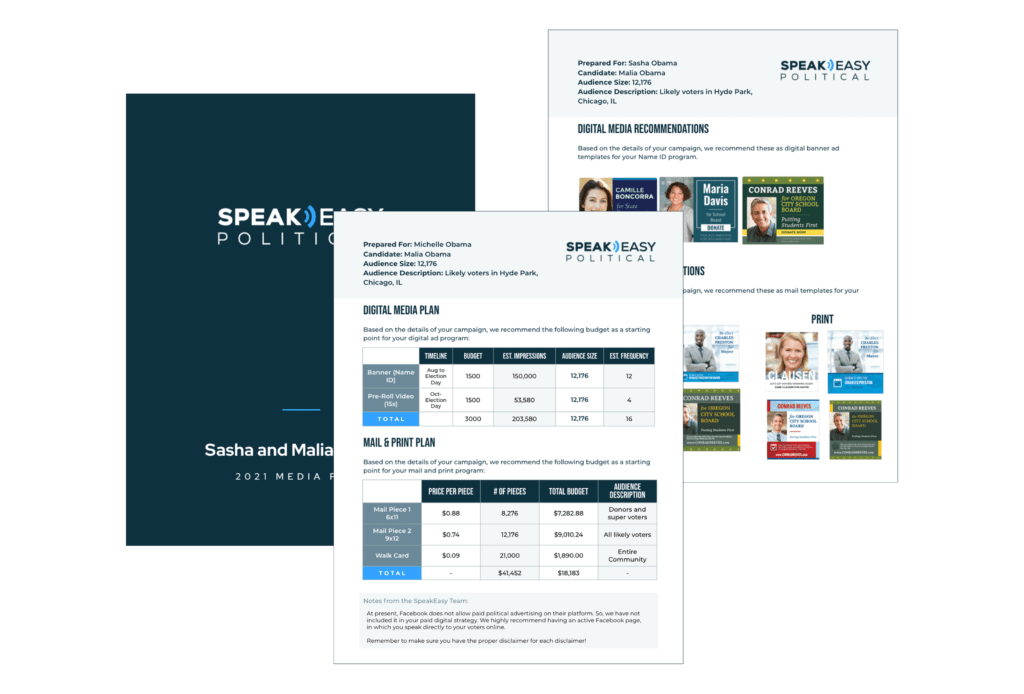Here at SpeakEasy, we chat with candidates running for office up and down the ballot all the time. One common thread we hear is that candidates want to thoughtfully apportion their digital ad budget and strategically integrate it with their mail and print programs. But, this is a big task and they aren’t quite sure where to start.
Leveraging our experience working with hundreds of campaigns, we’ve built a free-to-use tool that generates campaign mail and digital ad plans. You’ll input a few details about your campaign and we’ll send you a customized breakdown of recommended budgets for each channel, the estimated number of times your ads will be shown, and suggested SpeakEasy templates.
What will I receive?
You’ll receive what we call a “media plan.” A media plan is a recommended breakdown of how you should spend your advertising and mail budgets. The goal is to ensure you speak to your voters with the right message, in the right place, and at the right time. You’ll receive a media plan that includes budget recommendations for both digital and mail channels as well as a break down of the pieces we’d recommend you create, how much funding to put behind each one, and how long to run each one.
Why do I need a media plan?
Campaign budgeting is critical and it’s not an easy task. A media plan allows you to better plan for how much to spend in each channel, when to spend, and most importantly, how to integrate all of your various channels together. A media plan is also helpful when creating your fundraising goals and timelines to ensure that you have some form of advertising in the field, speaking to your voters at all times.
How does a media plan work for digital?
For digital campaigns, your media plan will break down:
- Recommended spending for video ads and static banner ads
- Suggested focus of each ad (name recognition, GOTV, policy, etc.)
- Projections of how many times your ad will be shown (should you choose to use SpeakEasy)
- Professionally designed templates you could use for your race
Digital ads will be matched directly to your voters and are a targeted, cost-efficient way to speak continuously to your supporters throughout the campaign.
How does a media plan work for mail?
Our mail program works similarly to digital. Based on your voter universe, we will recommend a mail program, including:
- Recommended themes for each of your pieces
- Suggested audience for each piece
- Optimal time to send each piece
- Professionally designed templates you could use for each piece
Here’s a sample of what your media plan will look like:





